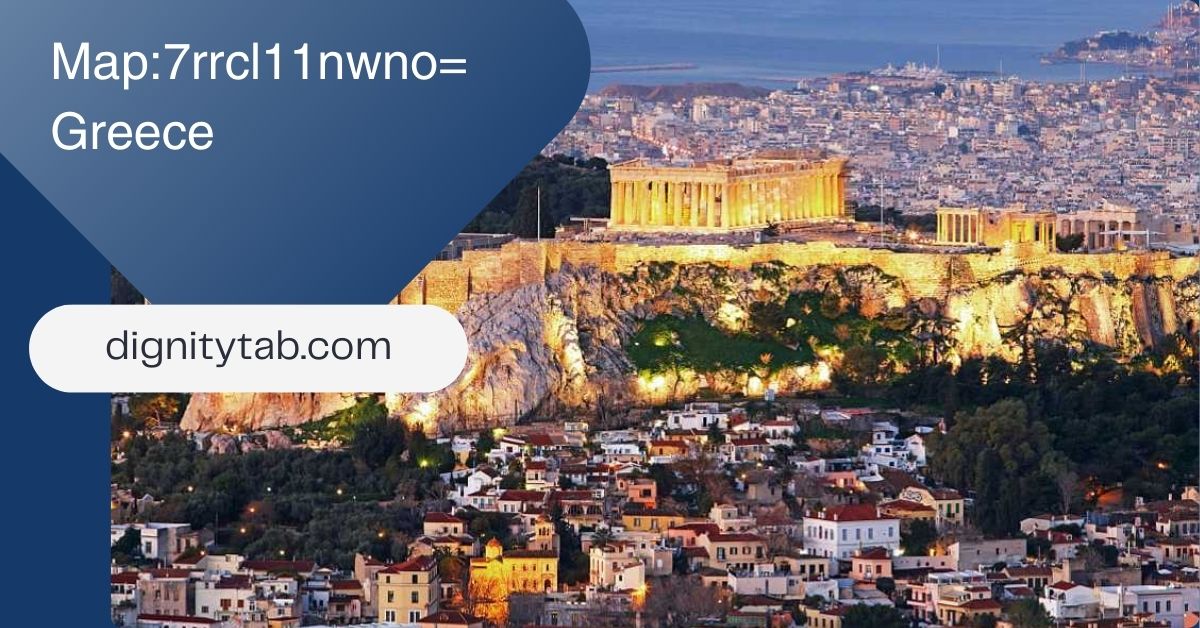Greece is a country renowned for its historical significance, its ancient monuments, and its rich culture. However, Greece’s natural beauty is just as remarkable and diverse, offering a blend of landscapes, breathtaking coastlines, mountain ranges, and unique islands that captivate both locals and visitors. In this guide, we will explore the map:7rrcl11nwno= Greece, uncovering the many natural wonders that this beautiful country has to offer. Whether you’re an adventurer, a nature enthusiast, or simply looking to relax, Greece has something for everyone.
Understanding the Map:7rrcl11nwno= Greece
Before diving into Greece’s natural wonders, it’s important to understand the geographical layout and key features of the map:7rrcl11nwno= Greece. Greece is located in southeastern Europe, surrounded by the Mediterranean, Aegean, and Ionian Seas. The country is made up of a mainland peninsula and thousands of islands scattered throughout the Aegean and Ionian seas, making it one of the most famous coastal destinations in the world.
The map:7rrcl11nwno= Greece reveals an array of stunning landscapes, from majestic mountains to pristine beaches. The terrain varies greatly, offering everything from rugged hills and vast plains to lush forests and crystal-clear waters. To truly appreciate Greece, one must explore both its historical landmarks and natural landscapes.
The Natural Wonders of Greece: A Deep Dive
1. The Majestic Meteora Rocks
On the map:7rrcl11nwno= Greece, the Meteora region stands out as one of the most extraordinary natural wonders. Located in central Greece, Meteora is known for its unique rock formations. Towering cliffs rise dramatically from the plains below, offering one of the most awe-inspiring landscapes in the world. The name “Meteora” means “suspended in the air,” which is fitting given that monasteries were built on top of some of these towering rocks.
The Meteora rocks, which are part of a UNESCO World Heritage site, provide visitors with opportunities for hiking, rock climbing, and photography. The monasteries, perched precariously atop the rock pillars, offer breathtaking views of the surrounding landscape, making it a must-see for any traveler.
2. Mount Olympus: The Home of the Gods
No map of Greece would be complete without mentioning Mount Olympus. Known in Greek mythology as the home of the gods, this towering mountain is the highest in Greece, standing at 2,917 meters (9,570 feet). Mount Olympus is not only a cultural symbol but also a hub for outdoor activities such as hiking, mountaineering, and nature walks.
Hikers on Mount Olympus can explore diverse ecosystems, ranging from lush forests at lower altitudes to alpine meadows and rocky slopes near the summit. For those who are fascinated by ancient Greek mythology, hiking here also offers a chance to experience the legendary terrain of gods and heroes.
3. The Stunning Islands of Greece
The map:7rrcl11nwno= Greece is dotted with over 6,000 islands, each offering its own unique blend of natural beauty. Some of the most famous islands include:
- Santorini: Famous for its whitewashed buildings and crystal-clear waters, Santorini offers stunning volcanic landscapes and breathtaking sunsets. The island’s volcanic caldera is one of the largest in the world, providing a unique backdrop for exploring ancient ruins and enjoying the Mediterranean breeze.
- Crete: The largest island in Greece, Crete offers a mix of rugged mountains, sandy beaches, and fertile plains. The island is home to numerous hiking trails, including those that lead to the Samaria Gorge, one of the longest gorges in Europe.
- Corfu: Located in the Ionian Sea, Corfu is famous for its lush greenery, olive groves, and crystal-clear beaches. It is a favorite among nature lovers due to its scenic hiking paths and Mediterranean climate.
- Zakynthos: Known for its stunning Navagio Beach, Zakynthos features limestone cliffs, clear blue waters, and vibrant marine life. The island’s waters are also home to the endangered loggerhead sea turtles, adding to its appeal as a nature destination.
4. The Blue Caves of Kefalonia
On the map:7rrcl11nwno= Greece, the island of Kefalonia is home to some of the most beautiful natural formations in the country: the Blue Caves. These sea caves, located along the northern coast of the island, are famous for their glowing blue waters. The color is created by sunlight reflecting off the white sand at the cave’s bottom.
Visitors can take boat tours to explore the caves, which are also popular for snorkeling and swimming. The stunning scenery surrounding the caves includes rugged cliffs, clear waters, and the tranquility of the Ionian Sea.
5. The Unique Vikos Gorge
Vikos Gorge, located in the Pindus Mountains, is one of the deepest gorges in the world, according to the Guinness World Records. Situated in the region of Epirus, this dramatic gorge stretches for 20 kilometers and reaches depths of over 1,000 meters in certain areas. The map:7rrcl11nwno= Greece reveals a landscape that is perfect for those seeking adventure and natural beauty.
Hiking through Vikos Gorge offers an unparalleled experience for nature lovers. The gorge is home to rare flora and fauna, making it an essential stop for ecotourism enthusiasts. The nearby village of Papingo offers a cozy resting place for hikers before they continue their journey through the gorge.
6. The Beaches of Halkidiki
On the map:7rrcl11nwno= Greece, Halkidiki is a popular peninsula known for its pristine beaches and crystal-clear waters. Located in northern Greece, Halkidiki is made up of three smaller peninsulas: Kassandra, Sithonia, and Mount Athos. Each peninsula offers unique beaches, charming villages, and lush landscapes.
- Kassandra is known for its lively beach resorts and vibrant nightlife.
- Sithonia is ideal for those looking for a more peaceful and secluded beach experience.
- Mount Athos is home to the world-famous Mount Athos Monastery, a UNESCO World Heritage site and an important pilgrimage destination.
The beaches in Halkidiki range from golden sandy stretches to rocky coves, making it a haven for beach lovers and outdoor enthusiasts alike.
The Role of the Map:7rrcl11nwno= Greece in Navigation and Travel
For those traveling to Greece, having access to an accurate map:7rrcl11nwno= Greece is essential. Whether you are exploring the famous natural wonders or discovering hidden gems off the beaten path, a detailed map helps travelers find the best routes, access remote areas, and navigate the country’s diverse landscapes with ease.
Using a modern, interactive map can enhance the experience, allowing users to zoom in on specific regions like the Meteora rock formations, Mount Olympus, or the beaches of Halkidiki. It can also provide insights into the best hiking trails, scenic viewpoints, and coastal roads, making it an indispensable tool for any traveler.
Conclusion: Embrace the Natural Wonders of Greece
The map:7rrcl11nwno= Greece offers more than just a guide to the country’s geography—it reveals a treasure trove of natural beauty. From the awe-inspiring Meteora rocks to the pristine beaches of Halkidiki and the majestic peaks of Mount Olympus, Greece is a land of diverse and stunning landscapes. Whether you are exploring ancient ruins, relaxing on a quiet beach, or hiking through a gorge, Greece’s natural wonders provide an unforgettable experience.
FAQs About Map:7rrcl11nwno= Greece and Its Natural Wonders
What are the must-see natural wonders in Greece?
Some of the top natural wonders include the Meteora rock formations, Mount Olympus, the Blue Caves of Kefalonia, and the Vikos Gorge.
How can I navigate Greece’s natural landscapes?
Using an accurate map:7rrcl11nwno= Greece, especially digital maps or apps, can help you explore the country’s diverse natural wonders and find hiking trails, scenic spots, and hidden gems.
What is the best time to visit Greece’s natural attractions?
The best time to visit is during the spring (April to June) and autumn (September to October), as the weather is pleasant and there are fewer tourists.
Are the beaches in Greece suitable for families?
Yes, many of Greece’s beaches, such as those in Halkidiki and Crete, offer calm waters, shallow areas, and family-friendly amenities, making them ideal for families with children.
Can I visit the monasteries at Meteora?
Yes, visitors can explore the monasteries at Meteora, but it’s important to check the visiting hours as some may be closed on certain days of the week.



